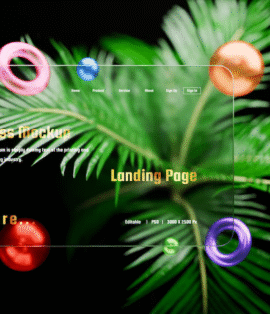Web Design for Interior Designers: Creating a Chic Online Identity
Web design for interior designers can no longer depend only on printed portfolios and word-of-mouth in today’s digitally-first world. A well-designed website is a strategic tool that conveys your brand, fosters trust, and converts inquisitive visitors into devoted customers. It is more than just a visual showcase. It’s crucial for interior designers to invest in a website that showcases their professionalism and aesthetic sense.
The significance of web design for interior designers, the characteristics that set a website apart, and how excellent design generates more leads are all covered in this article.
The Significance of a Professional Website for Interior Designers
Your website serves as a combination of a business card, online portfolio, and sales assistant. Regardless of whether you are a boutique design firm, commercial space specialist, or residential stylist, your website should:
- Present your projects in a stunning manner
- Show off your distinct brand and style
- Make it simple for prospective customers to get in touch with you
- Boost your Google ranking with SEO optimisation
You’re losing out on important leads and branding opportunities if your website isn’t both aesthetically pleasing and functional.
Showcase Your Best Work in a Visual Portfolio
Every interior design website revolves around high-quality images. Included in your portfolio should be:
- Before and after pictures
- Descriptions of the projects
- Customer endorsements
- Design problems and fixes
A simple layout that emphasises images lets your work do the talking. Think about a portfolio that can be filtered by project type, such as living room, kitchen, or commercial.
Interior Designers’ SEO-Optimised Websites
It’s not enough to have a beautiful website. When users type terms like these into search engines like Google, SEO (Search Engine Optimisation) makes sure that your website appears in the results:
- Sydney interior designer
- Designer of modern kitchen makeovers
- Expert in luxury home styling
To achieve this, your website should include:
- Fast-loading pages
- Mobile responsiveness
- Keyword-optimised content
- Appropriate meta titles and descriptions
- Google Maps integration for local SEO
Your website can become an effective marketing tool by combining technical performance with elegant design.
Mobile-Friendly and Simple to Use
Over 60% of people use their phones to browse the internet. Large images, readable text, and clickable call-to-action buttons are essential components of a mobile-responsive website.
Intuitive navigation is also essential. Visitors should be able to:
- Check out your offerings
- Look through your gallery
- Go over your story
- Reach out to you easily
The user experience can be improved without overwhelming visitors by using simple, scroll-based layouts and smooth animations.
Branding That Complements Your Style
Just as interior designers put a lot of effort into creating spaces that flow together, your website should too. Your brand must be reflected in everything, including your logo, colour palette, and typeface selections.
Your website should reflect your personal style, whether it’s bohemian, eclectic, minimalist, or luxurious. A consistent visual identity across your homepage, portfolio, and contact form helps build trust and brand recognition.
Crucial Elements of Websites for Interior Designers
Every interior design website should include the following:
- Gallery or portfolio showcasing completed projects
- About page introducing your story and design philosophy
- Service pages clearly outlining your offerings
- Testimonials as proof of client satisfaction
- Blog to share tips, trends, and project updates
- Contact form to simplify enquiries
You may also consider adding a newsletter sign-up, social media integration, and even a consultation booking calendar.
Recent Posts
- 10 Inspiring Website Design Examples You Can Explore Online for Free
- 7 Best Platforms for Website Design Free – Build Without Limits
- 10 Powerful Website Design Ideas to Inspire Your Next Project
- Tradies Website Design: Build Trust and Get More Jobs Online
- Optometrist Website Design: Grow Your Practice with a Modern, Patient-Friendly Website




Comments are closed